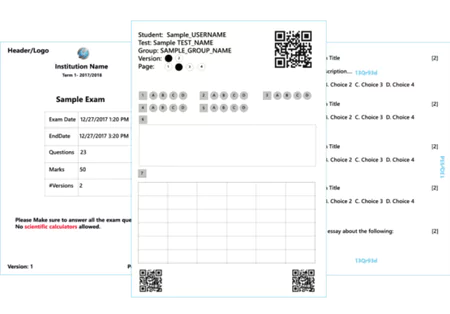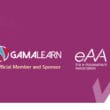Promoting Critical Thinking Skills and Digital Literacy for 21st-Century Learning
When it comes to digital assessments, there is a broad range of question formats available. Most questions will fall into one of two categories: closed questions and open-ended questions. Most people are familiar with closed questions where there will be a set of correct answer(s) to the question that does not require further explanation. Alternatively, open-ended questions require individuals to answer prompts with further actions such as short and extended-form essay questions (Nielsen Norman Group, 2016).
Contents
Why use Open-Ended Questions in digital assessments?
Open-ended questions are very important in digital assessments because they promote higher-order thinking skills and assess students at a higher depth of knowledge than multiple-choice questions. Open-ended questions require critical thinking skills to plan, formulate, and execute a proficient answer. They also provide confidence for educators that students demonstrate a high level of content mastery and can explain the rationale behind their answers. Assessments should usually contain a mixture of closed and open-ended questions.
While the importance of open-ended questions is not a new concept, the digital shift in assessment has resulted in many educators cutting open-ended questions out of their test formats. A problem has emerged revealing that students are unfamiliar with the concept of answering open-ended questions on a digital device. This is partially due to a skill gap where students are not being taught to use keyboards and technology to communicate in the same way they learn about handwriting. However, digital literacy and typing skills are important 21st-century assets that are expected of individuals in the workforce. With proper support from educators, students can learn to be comfortable and develop digital literacy skills that will have a real-world impact. It will also positively impact the digital assessment process, allowing students to take assessments online without compromising the rigor and depth.
With the right platform and training, educators have many options to successfully implement open-ended questions on their digital assessments. Using a high-end assessment management platform like SwiftAssess to create open-ended assessment items can close the gap between traditional test formats and digital assessments. With customizable question types, interactive features, and various delivery methods, educators can have the convenient features of digital assessments while reaping the cognitive benefits of open-ended questions.
How Can Educators Present Open Ended Questions on Digital Assessment Platforms

Presenting open-ended questions on a digital assessment platform comes down to three key components: question format, interaction experience, and delivery experience. Let’s unpack each pilar and discuss the options available.
- Question Formats: Open-ended questions come in many varieties. Here are a few of the question types you can create using digital assessment tools.
- Short Response: Students will have the chance to write or type an answer to a question. These are usually brief, around or less than 150 words.
- Extended Response: Students will answer a traditional style
Equation Editor: Students must solve step-by-step- math equations in response to specific prompts. This is a great feature for Math and science subjects such as Physics and Chemistry.
- Handwriting & Sketching: Students must write, draw, or annotate on various backgrounds and preconfigured templates such as lines, grids, or others. Students can complete these items using a computer mouse, touchscreen, stylus, or external pen if using SmartPaper.
- Interaction Experiences: When it comes to answering open-ended questions on a digital device, this can be done in a few ways. Here are three interaction experiences that test takers can choose from.
- Keyboard: Students can use either a traditional keyboard accessory or an on-screen touch keyboard to type out their answers. This flexible option is compatible with
Handwriting: Students can use their own handwriting to answer open-ended questions. On a tablet,- they can use their fingers or a stylus. On a traditional computer or a laptop, students can use this feature with a mouse.
- Audio Recording: An audio recording can be used to document an answer. Students can record voice-memo-style audio recordings through device microphones or microphone plug-ins.
- Delivery Experiences: The use of a digital assessment platform does not require a fully digital testing experience. Educators can choose from a few formats to decide which test presentation best meets their needs.
- Fully Digital: This is what most people imagine when thinking of a digital assessment. This delivery experience is fully digital and does not require or utilize any paper or off-device materials.
- Hybrid/Blended: The hybrid test delivery model merges traditional testing with digital tools. All questions will be delivered in a digital format on the device screen, and any closed questions that are graded automatically will be graded digitally by the platform. However, open-ended questions can be answered on an external sheet of paper or inside a booklet. These are submitted to the proctor after a test and graded manually by hand. The grade then gets manually added to the test score later.
- SmartPaper – SmartPaper is an innovative breakthrough in digital assessments. It revolutionizes the traditional bubble sheet, making it easily accessible and compatible with any paper, printer, or scanner. SmartPaper can be used alongside a device; The device would display the questions while all the answers, both multiple choice and open-ended, can be answered on the SmartPaper. Alternatively, the full exam can be printed on SmartPaper if one-to-one devices are not available for students. This delivery method is great because it allows the comfort and routine of traditional testing methods while also maintaining the convenience and precision of digital assessment grading and data reporting.

What Tools Can Be Used to Evaluate Open-Ended Questions on Digital Assessments?
As previously mentioned, digital assessment platforms will usually auto-grade closed questions with specified correct answers. When it comes to open-ended questions, educators must review and evaluate the responses themselves. However, manual grading does not mean compromising on the amazing features that digital assessments offer. Educators can still take advantage of digital annotations, grading rubrics, and double marking. Here are some of the ways this can be done.
- Web Grading: Access the responses through your platform and grade manually. This requires access to an active network connection.
- Offline Grading: Some platforms, like GradeMate by SwiftAssess, allow educators to grade offline. This is done by downloading responses to your device. Once they are downloaded, you can conveniently grade from any location regardless of network access and sync your grades whenever a connection is available.
Administer High-Quality Open-Ended Assessments with High-Quality Digital Assessment Tools
The bottom line is that in order to assess students at the highest depth of knowledge, it is crucial to integrate open-ended questions. Thanks to breakthroughs in digital assessments, the benefits of open-ended questions are now easily compatible with the convenience and flexibility of digital assessments. To learn more about adopting a high-quality digital assessment platform with customizable question types and offline grading, contact the SwfitAssess team today.
Sources
“SmartPaper.” SwiftAssess, 29 Sept. 2022, swiftassess.com/products/smartpaper.
World Leaders in Research-Based User Experience. “Open-Ended vs. Closed-Ended Questions in User Research.” Nielsen Norman Group, 2016 www.nngroup.com/articles/open-ended-questions/.





